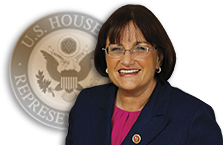Press Releases
Kuster, Pappas Call on FAA To Ensure Airports Can Use PFAS-Free Firefighting Foam
Washington,
November 18, 2021
Washington, D.C. - On November 9, Congressman Chris Pappas (NH-01) and Congresswoman Annie Kuster (NH-02) joined Congressman Kildee (MI-05) and Senator Gillibrand (D-NY) to send a letter to the U.S. Federal Aviation Administration (FAA) urging the agency to ensure airports are able to use PFAS-free firefighting foam.
In 2018, Congress directed the FAA to change its rules so that commercial airports could switch to per- and polyfluoroalkyl substances (PFAS)-free firefighting foams. The October deadline to do so has passed, and current FAA regulations have not been updated.
In the letter, the lawmakers wrote, “We were pleased to see that the FAA issued an alert to airports on October 5, 2021, announcing that the airport firefighting foam standards no longer requires that foam “shall consist of fluorocarbon surfactants,” (i.e. foams must contain toxic PFAS chemicals), as required by Congress in Section 332. However, because the FAA has not authorized the use of any alternative PFAS-free foams, provided any information about applying the UL 162 performance requirements to fluorine-free foams at airports, or updated the current military performance standard requirement, airports are not allowed or in a position to make the switch at this time.”
“As Members of Congress who represent communities impacted by PFAS pollution from airports, we are urging the FAA to act swiftly to address this urgent issue,” the lawmakers continued. “Any delay in updating the current performance requirements and authorizing a PFAS-free alternative will continue to exacerbate the potential contamination of ground and drinking water supplies by PFAS, endangering in the health of those who reside in communities near airports.”
PFAS is the key ingredient in a special kind of firefighting foam, aqueous film-forming foam (AFFF) typically used on high-heat fuel fires. For decades, AFFF has been discharged during fire emergencies and routine training exercises at airports and has resulted in large releases of PFAS into nearby drinking water sources, exposing people to these chemicals linked to cancer and thyroid disease. While over 100 viable PFAS-free firefighting foams are already available and being used at international airports across the world, current FAA regulations still do not recognize these foams.
The full text of the letter can be found here and below:
Administrator Dickson:
We are writing today regarding the steps that need to be taken to enable airports to utilize PFAS-free firefighting foam. To clarify, Congress’ original intent of Section 332 of the Federal Aviation Administration Reauthorization Act of 2018 (P.L. No. 115-254) was to trigger actions by the U.S. Federal Aviation Administration (FAA) so airports would have the option to begin using PFAS-free firefighting foam by October 4, 2021.
PFAS, formally known as perfluoroalkyl and polyfluoroalkyl substances, are a class of toxic chemicals that have impacted the lives of Americans nationwide. PFAS have been linked to certain cancers, thyroid disease, reproductive problems, decreased immune function in children, and other serious adverse health effects. Experts estimate that the drinking water supplies of more than 200 million Americans are contaminated with PFAS.
We understand that the FAA under the Biden-Harris administration is working with the U.S. Department of Defense (DOD) to find a PFAS-free firefighting foam alternative, conducting research on the use of firefighting foam containing PFAS, and using technology to reduce PFAS discharges in testing of firefighting equipment. We know that the Biden administration shares a commitment to addressing the PFAS contamination crisis and taking steps to tackle this urgent public health emergency.
We were pleased to see that the FAA issued an alert to airports on October 5, 2021, announcing that the airport firefighting foam standards no longer requires that foam “shall consist of fluorocarbon surfactants,” (i.e. foams must contain toxic PFAS chemicals), as required by Congress in Section 332. However, because the FAA has not authorized the use of any alternative PFAS-free foams, provided any information about applying the UL 162 performance requirements to fluorine-free foams at airports, or updated the current military performance standard requirement, airports are not allowed or in a position to make the switch at this time. Additionally, the only way for airports to comply with the current performance standards is by using foams containing PFAS. Therefore, we urge you to take immediate action to update the current performance standard requirements for civilian airports and ensure airports are able to start using PFAS-free foam alternatives as soon as possible.
As Members of Congress who represent communities impacted by PFAS pollution from airports, we are urging the FAA to act swiftly to address this urgent issue. Any delay in updating the current performance requirements and authorizing a PFAS-free alternative will continue to exacerbate the potential contamination of ground and drinking water supplies by PFAS, endangering in the health of those who reside in communities near airports.
Many airports globally are already using fluorinated-free foams at their airports. Some of the major international airports using PFAS-free alternatives include: London Heathrow, Gatwick, Stansted and City, Manchester, Paris Charles De Gaulle, Paris Orly, Lyon, Helsinki, Lisbon, Dubai, Brussels, Copenhagen, Oslo, Stockholm, Stuttgart, Dortmund, Sydney, Melbourne and Brisbane. Firefighting experts believe the military standards created by the U.S. Navy are largely over engineered for shore based fires, and were designed more specifically to address fires on the seas.
Therefore, we request that FAA:
Provide specific actions FAA plans to take to enable airports to complete the switch to PFAS-free foam and propose a timeline for each action; Immediately allow all U.S. civilian airports to use fluorine-free foam, and allow them the flexibility to meet standards used by international airports such as ICAO Level B. We look forward to working with you on addressing this public health and environmental issue. Residents of communities living nearby airports deserve immediate action. Swift actions must be taken to protect them.
Thank you for your attention to this important issue.
Sincerely,
###
|
